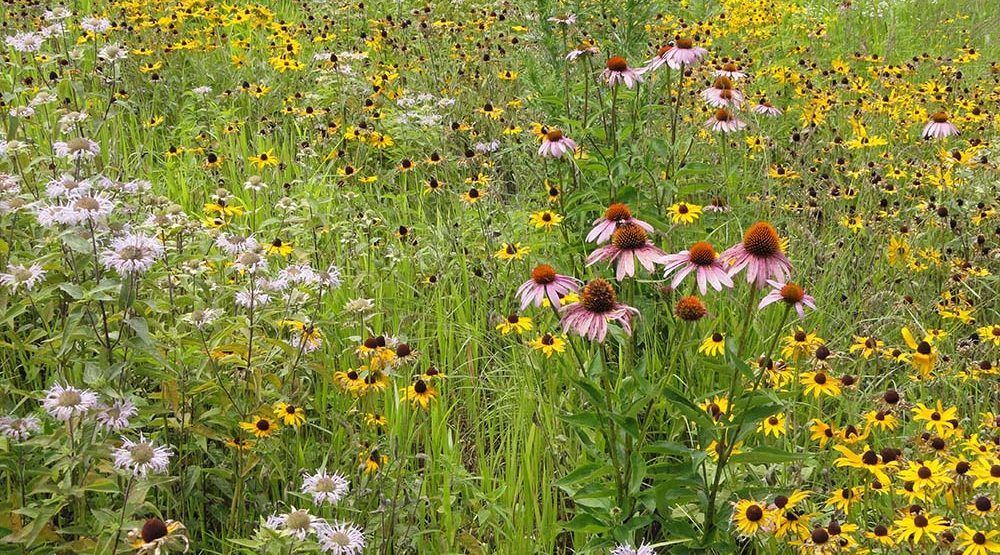Create Pollinator-Friendly Garden: Top Tips

Imagine stepping into a garden buzzing with life—bees humming, butterflies fluttering, and birds chirping. This isn't just a dream; it's a reality you can create by transforming your outdoor space into a pollinator-friendly haven. With the right tips, you can cultivate a garden that supports local wildlife and boosts biodiversity. Let's dive in and explore how to create a pollinator-friendly garden that's both beautiful and beneficial.
Understanding Pollinator Habitats
Before we get our hands dirty, let's understand what makes a garden pollinator-friendly. Pollinators like bees, butterflies, and hummingbirds need specific habitats to thrive. These habitats provide food, shelter, and nesting sites. By incorporating native plants and bee-friendly species, you can create a sanctuary that supports these vital creatures.
Why Native Plants Matter
Native plants are the backbone of a pollinator-friendly garden. They have evolved alongside local pollinators, making them perfectly suited to provide the necessary nectar and pollen. Native plants also require less water and maintenance, making them an eco-friendly choice.
Top Tips for Creating a Pollinator-Friendly Garden
1. Choose the Right Plants
Selecting the right plants is crucial. Opt for a variety of native and bee-friendly plants that bloom at different times of the year. This ensures a continuous food source for pollinators. Some popular choices include:
- Spring Blooms: Crocus, daffodils, and lilacs.
- Summer Blooms: Coneflowers, black-eyed Susans, and lavender.
- Fall Blooms: Asters, goldenrod, and sedum.

2. Provide Water Sources
Pollinators need water just like any other creature. A shallow birdbath or a small pond can serve as a watering hole. Make sure to include rocks or pebbles for insects to perch on while they drink.
3. Create Shelter and Nesting Sites
Provide shelter and nesting sites by leaving some areas of your garden undisturbed. Dead wood, leaf litter, and bare soil can serve as homes for bees and other beneficial insects. You can also install bee houses or nesting boxes to encourage pollinators to stay.
4. Avoid Pesticides
Pesticides can be harmful to pollinators. Opt for natural pest control methods instead. Companion planting, beneficial insects, and physical barriers can help keep pests at bay without harming your garden's ecosystem.
5. Plant in Clusters
Planting in clusters makes it easier for pollinators to find and access food sources. Group similar plants together to create a buffet of nectar and pollen. This not only benefits pollinators but also adds visual appeal to your garden.
6. Incorporate Diverse Plant Structures
Different pollinators have different preferences. Some prefer flat, open flowers, while others prefer tubular blooms. Incorporate a variety of plant structures to cater to a wide range of pollinators.

7. Maintain Garden Biodiversity
A diverse garden is a healthy garden. Include a mix of trees, shrubs, and flowers to support a wide range of wildlife. This not only benefits pollinators but also enhances the overall biodiversity of your garden.
8. Educate Yourself and Others
Learning about pollinators and their habits can help you make informed decisions. Share your knowledge with others to inspire more pollinator-friendly gardens in your community.
External Resources for Further Learning
For more in-depth information, check out these authoritative resources:
- The Xerces Society: A non-profit organization dedicated to invertebrate conservation.
- Pollinator Partnership: An organization focused on protecting pollinators and their ecosystems.
- National Wildlife Federation: A resource for creating wildlife-friendly habitats.
Conclusion
Creating a pollinator-friendly garden is not just about beautifying your outdoor space; it's about supporting the ecosystem that sustains us. By choosing the right plants, providing water sources, and avoiding pesticides, you can create a haven for bees, butterflies, and other beneficial creatures. Remember, every small step you take contributes to a larger, healthier world.
So, are you ready to transform your garden into a pollinator paradise? Let's get started and make a difference, one bloom at a time.
FAQs
What are the benefits of a pollinator-friendly garden? A pollinator-friendly garden supports local wildlife, enhances biodiversity, and contributes to a healthier ecosystem. It also provides a beautiful and relaxing space for you to enjoy.
How can I attract more bees to my garden? Planting a variety of bee-friendly plants, providing water sources, and creating nesting sites can attract more bees to your garden. Avoiding pesticides is also crucial.
What are some common native plants that attract pollinators? Common native plants that attract pollinators include coneflowers, black-eyed Susans, asters, and goldenrod. These plants provide essential nectar and pollen for bees and other pollinators.
How can I maintain my garden without using pesticides? Opt for natural pest control methods like companion planting, beneficial insects, and physical barriers. Regularly inspecting your plants for pests and maintaining garden hygiene can also help.
How do I create a water source for pollinators? A shallow birdbath or a small pond can serve as a watering hole for pollinators. Make sure to include rocks or pebbles for insects to perch on while they drink. Regularly clean and refill the water source to prevent mosquito breeding.
0 Response to "Create Pollinator-Friendly Garden: Top Tips"
Post a Comment